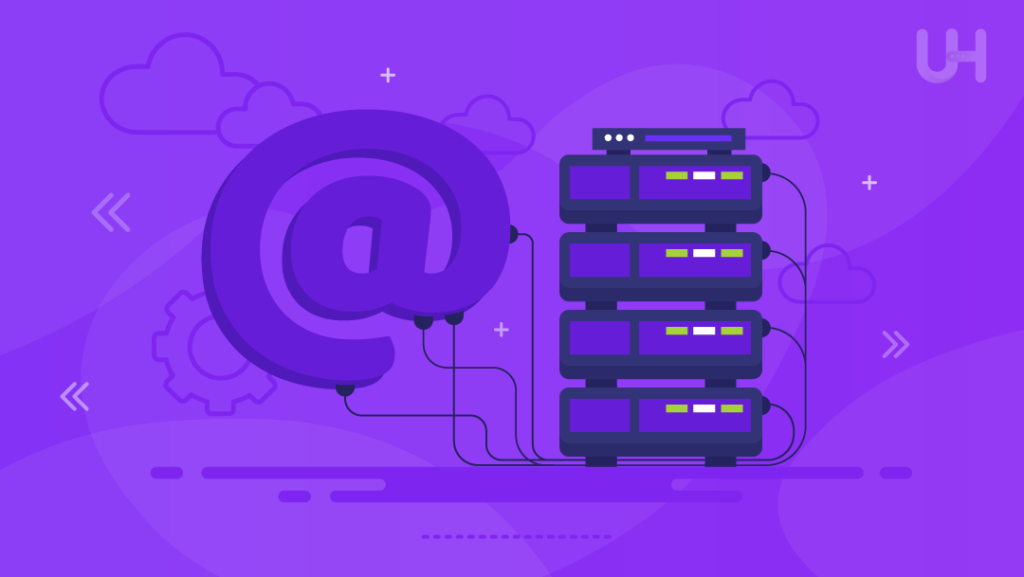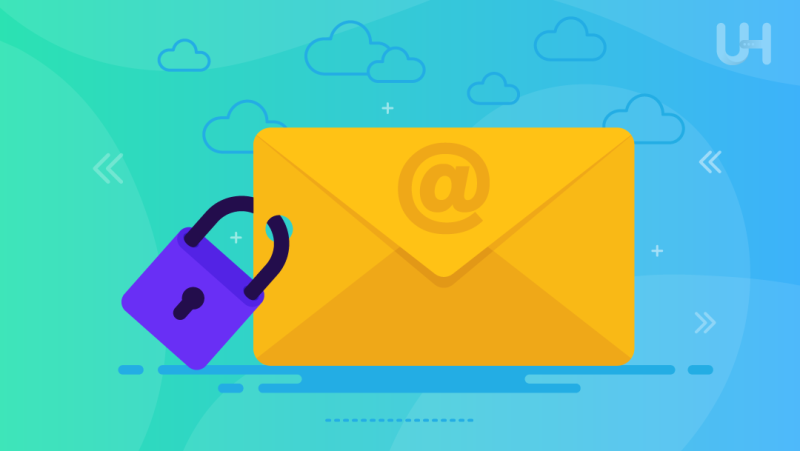Today’s world of technological advancements considers email as the backbone of business communication, and one can’t ignore its security. This blog discusses email security and highlights the best practices used to protect your business communication channels from potential threats.
What is Email Security?
Email security is not just a singular element but a combination of various strategies. The multiple strategies are secure email gateways and firewalls, organizational policies, and user training. In addition to protecting against external threats, email security also covers internal vulnerabilities, acknowledging that there can be security breaches inside the company.
Protecting the email infrastructure is crucial, and this step involves securing email servers and conducting regular security audits to identify and disclose any weaknesses and encrypted connections. Moreover, businesses can create a defense system against the vast range of threats targeting emails by adopting a policy of comprehensive research.

Why Email Security is Important?
Email security has associations with a lot of risks. A security breach damages a company’s reputation and exposes sensitive data. Email attacks such as phishing lead managed dedicated servers and business emails to unauthorized access, ransomware attacks, and data manipulation and aim for financial gains.
The current world of technology requires email security measures. Failure to meet these measures breaks the trust of the users, and they are also at risk of facing legal consequences. Accessing these concerns, it is evident that businesses to secure their emails against threats.
Common Threats to Business Emails
Phishing
Phishing is the most dangerous attack. It is different from email scams, mimics trusted entities, and utilizes social engineering techniques. Education and awareness related to these threats are needed so that users can actively participate in the defense against malicious and phishing threats.
Malware
Through harmless email attachments, malware, another common threat, can be introduced into the systems. Studying the importance of advanced threat detection mechanisms and the evolution of malware attacks within email protection solutions can also provide a better understanding for businesses to take adequate security measures for defense.
Best Practices to Protect Business Email
Here are some of the tested practices to help you protect your business emails:
Importance of Encryption in Email Communication
Encryption plays a vital role in the security of email communication. It ensures data protection and content during transmission and protects against data interception and eavesdropping in industries where confidentiality and privacy are essential.
Select Dedicated Servers For The Best Email Hosting
Looking for secure hosting with dedicated email hosting servers? Our email hosting ensures that you are able to host your business emails with proper security and promote your website.
Different types of email encryption, such as transport layers and end-to-end encryption, allow businesses to make decisions according to their requirements. Encryption techniques add an extra layer of security to the email servers and email infrastructure.
Two-factor authentication (2FA) for Enhanced Security
Two-factor authentication (2FA) plays a significant role in enhancing the security of emails. It requires users to provide a second form of identification, a biometric verification, or a temporary code. It also reduces the risk of compromised passwords.
Furthermore, businesses can easily integrate this additional layer of security into their email systems as it offers various forms for practical implementation. There are multiple real-world examples where 2FA has blocked unauthorized access, thus proving its effectiveness.
Employee Training and Awareness Programs
Training and awareness programs regarding email protection are crucial for an organization. Organizations should not just give the employees theoretical knowledge of email security but also provide them with practical training and exercises according to different scenarios of email security.
Arrange other sessions to inform them of the latest security concerns and threats. They can also discuss various case studies that help them secure their emails and tackle obstacles if security issues happen. In general, an employee should have the proper knowledge of the upcoming technology. Training for VPS hosting, shared hosting, and domain hosting should also be there.
Regular Security Audits and Assessments
Regular security audits are crucial and require complete focus. These assessments show the details of email security vulnerabilities that may be missed in daily operations. Organizations can improve their security by adopting vulnerability scanning, penetrating testing, and comprehensive analysis of email logs.
Users can gain valuable information by sharing the practices used for adequate security audits and real-world examples, which help discover vulnerabilities. This also highlights the importance of a responsive approach to security threats.
Integrating Artificial Intelligence (AI) in Email Security
Artificial Intelligence (AI) is leading in the latest email security. Machine learning algorithms can identify patterns related to malicious activities, phishing attempts, and malware and analyze large datasets. The research on the evolution of AI in email security shows the potential to adopt real-time defense mechanisms.
The real-world examples of AI systems successfully used to neutralize and identify the latest threats show the impact of integrating these technologies. If these misconceptions and concerns are appropriately addressed, then AI in email security can be the widely used approach by businesses.
Building a Resilient Incident Response Plan
An efficient response plan is an integral part of adequate email security. The response plan is not just about preventing an attack; it’s also about practical and timely responses to incidents. A detailed plan outline includes the steps to take during the security breach, containment, recovery, eradication, identification, and lessons learned.
Businesses can secure their assets by creating a roadmap to enhance their response strategies by breaking down the components of the individual plan. This plan further includes collaboration with external parties, communication protocols, and the importance of post-incident analysis. The real-world case studies show the value of the rehearsed and well-prepared plan.
The Role of Threat Intelligence Platforms in Email Protection

In the fight against cyber threats, threat intelligence systems with AI powers are becoming immensely popular. There is a need to study how these platforms analyze data from multiple sources to identify trends and patterns, thus helping organizations take effective measures against the latest threats.
Integrating the threat intelligence platform into email security frameworks guides us in using their ability for real-time threat assessments. Businesses can enhance their defense mechanisms by studying AI-driven analytics, thus ensuring a practical approach to email security.
Collaborative Approaches to Have Business Email Security
Email security is a collaborative attempt rather than an individual effort. Industry collaboration can benefit the fight against email threats. A collective defense against emerging threats can be created with the help of initiatives such as collaboration with the cybersecurity companies, communities and intelligence sharing among the organizations.
Industry Partnerships
Industry partnerships and successful collaborations serve as powerful unions in email security. Through the comprehensive study of resources, businesses can move towards a more robust defense system. This type of system would be able to withhold cyber opponents’ changing strategies.
Regulatory Compliance and Email Security
Regulative compliance is a significant component of email security practices. Data security regulations on a global level and their effect on email security requirements must be investigated.
Understanding regulatory compliance
Whether it’s HIPAA or GDPR, understanding compliance procedures is necessary to devise email security measures that meet legal standards. Businesses can ensure that their practices align with the legal requirements. It can be done through the comprehensive study of the key regulations and their email security suggestions. Presenting reforms in the email security strategy increases the clients’ trust and reduces legal risks.
The Human Element: Addressing Insider Threats
The human activities within the organization can also cause risks; instead, more focus is on external threats. Inner organization threats can be in email security, and there is a need to address scenarios where employees learn to enhance the security of business emails instead of compromising on security.
Strategies to understand threats
The strategies to understand the threats involve employee education, technical records, and behavioral monitoring. Organizations trying their best to research the threats and understand the importance of the proactive approach that requires internal and external factors are real-world examples of developing organizations.
Continuous Improvement: The Iterative Nature of Email Security
Email security is a continuous process of adaptation and improvement rather than just a one-time goal achievement. The factors essential for constant development are the need to emphasize regular reviews, adjustments to the latest threats, and the importance of the mindset to adapt to the latest threats of email trends and email security.
Businesses can understand the dynamics of email security frameworks by the understanding of these frameworks. Different case studies that have successfully adopted a culture of continuous advancements in email security practices are inspiring other organizations to enhance their efficiency with time.
Future Trends in Email Security
Dive into the email security world by researching the technologies and emerging trends. From advanced AI-driven threat hunting to biometric authentication, an understanding of email security can prepare businesses for what lies ahead. Discussing the trends and how these trends align with the cyber threats can provide valuable information for effective planning.
Businesses can ensure that they remain ahead of the evolving landscape in email security by adapting to future trends and the need to study cutting-edge technologies and strategies. Those organizations who think ahead of the future and are ready to accept the innovation will be better able to understand the new challenges. They will then advise strategies to protect their email communication channels and email marketing.
Conclusion
To conclude, email security requires a proactive approach. Businesses can establish an effective defense against the changing landscape of email threats by staying conversant with emerging threats and adopting a proactive mindset.
Staying ahead of the latest developments is essential for creating an effective email security strategy. In the future, technological advancements related to AI-driven threat intelligence and quantum-resistant cryptography will be more critical.
If you are looking for suitable hosting for your businesses, make sure that your choices are not limited to just some cheap hosting servers, you must explore other varieties as well. Ultahost provides a Mac dedicated server that ensures that you use Apple software without purchasing Mac hardware.
FAQ
What is the role of email security for businesses?
Email security is essential for emails as these contain sensitive information. If information is stolen, it can lead to reputational damage, legal issues, and financial loss. It is essential to the security of business emails due to the rise of cybersecurity threats such as phishing and ransomware attacks.
What are the potential threats to businesses related to email security?
The common threats are ransomware, business email compromise (BEC), and phishing attacks. Malware and ransomware steal the system’s data, whereas phishing attacks trick users into revealing their personal information. BEC aims to mimic trusted entities so that employees are manipulated to perform fraudulent actions.
What are the advantages of using 2FA for email security?
The main advantage of using 2FA is that it provides an extra layer of security to ensure identification other than passwords. It sends a temporary code to the biometric verification or mobile device. Even if someone knows the password, 2FA ensures that unauthorized access is blocked.
How is employee training helpful for email security?
Employee training plays an essential role in email security. Phishing attacks can be recognized due to this training. The advantage of the training programs is that employees can learn the importance of a security-aware mindset, report incidents accurately, and identify malicious emails.








